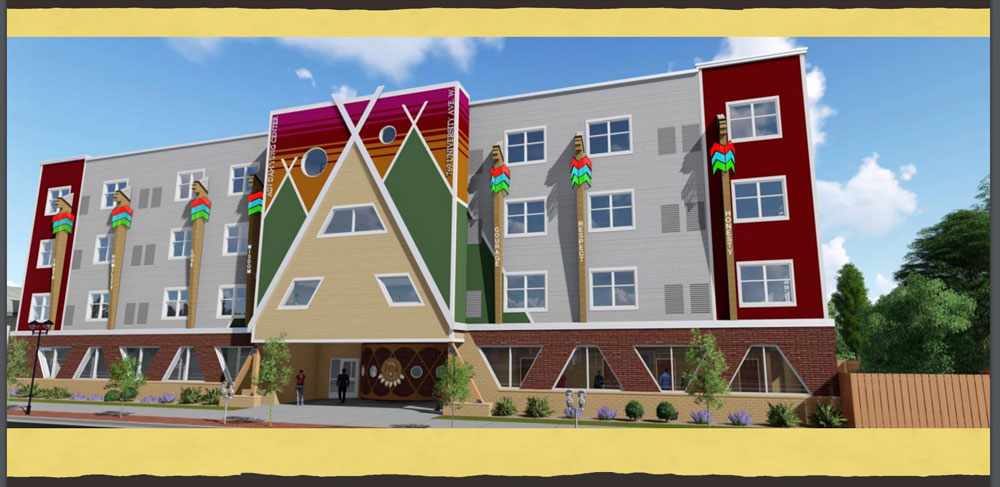
December 2, 2019; Star Tribune
Recently, a 42-unit, four-story apartment building that houses American Indian youth, ages 18 to 24, at risk of homelessness opened in St. Paul, Minnesota. The building, called Mino Oski Ain Dah Yung (Mino Oski) means “good new home” in Ojibwe.
Two nonprofits, the Ain Dah Yung Center in St. Paul and Project for Pride in Living in Minneapolis, partnered, with government support, to build, open, and operate the $13.6-million facility. Two Native American groups, the Mille Lacs Band of Ojibwe and the Shakopee Mdewakanton Sioux Community contributed about $100,000 toward the construction. Ain Dah Yung, which has 58 employees and a $1.7 million annual budget, raised nearly $4 million in donations to support the program and services that will be housed in the building.
The new facility is hailed as “a first of its kind building in Minnesota,” writes Kelly Smith in the Star Tribune. And, Smith adds, it is hoped that it will become a model for other supportive housing.
Mino Oski engages in common supportive housing strategies, with links for residents to therapy, job services, and schools. But Smith emphasizes that what makes it unique is that “it’s also designed to reestablish and strengthen the cultural identity of young American Indians through classes such as beading and drum-making, a sweat lodge and a medicine garden with traditional tobacco, sage, cedar and sweetgrass.”
“The building also creates a stronger American Indian presence in St. Paul,” Smith says.
Sign up for our free newsletters
Subscribe to NPQ's newsletters to have our top stories delivered directly to your inbox.
By signing up, you agree to our privacy policy and terms of use, and to receive messages from NPQ and our partners.
Deb Foster, executive director of the Ain Dah Yung Center, tells Smith, “When people think of St. Paul, they don’t think of St. Paul having an American Indian population because they don’t see us.…We wanted to build something that would represent the Native community.”
The building is still filling up, but to date more than a dozen residents have moved into the building, which is along the Green Line light rail line. Rent for residents is on a sliding scale, set at 30 percent of income. Jacob Hustedt, Ain Dah Yung’s development director, says “demand is overwhelming” and expects the building “to be filled really quickly.”
The overall building has 50,000 square feet. It was designed by a Native American architect from DSGW Architects and built by Loeffler Construction, a female- and Native American-owned company. The building includes American Indian design elements, from a tepee-inspired entrance honoring Sioux communities to seven totems representing the seven teachings of the Anishinaabe culture.
“Inside,” Smith notes, “circular rooms that mimic the shape of a sweat lodge or a drum are used as teaching spaces and a gallery featuring work by Native American artists. A community center also hosts events such as drum circles and round dances.”
At NPQ, we have noted before the importance of cultural supports in healing. As Brooke Mosay Ammann wrote earlier this fall, “Language and culture revitalization are not simply an effort to hold on to an idealized past, they are a vital component of community wellness in modern indigenous communities.” The same is true in urban American Indian communities as well.
Foster notes that, “There’s nothing like it around. We do not have enough places where our young people can first and foremost heal from the historical trauma that is still very present today…they need to have a sense of identity, a positive sense of who they are.”—Steve Dubb













